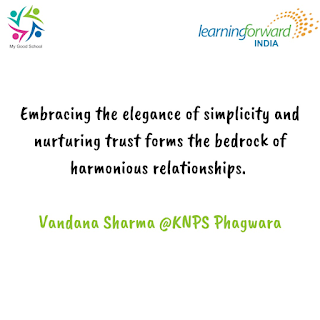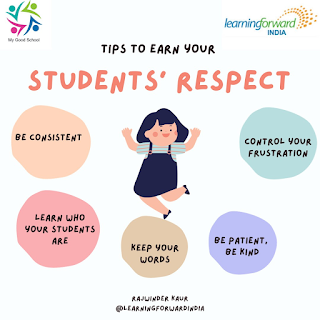A. When you were a student, what were the 3 most critical instances where you felt that more freedom at your disposal would have allowed you to realize your goals/potential in a better way? Do you think any of those circumstances exist even today?
As a student, I remember feeling that having more freedom to explore different subjects and choose my own learning path would have helped me realize my goals better. I also wished for more freedom in expressing my creativity and pursuing extracurricular activities. And of course, having the freedom to make mistakes and learn from them would have been valuable too.
Having more freedom in choosing their own learning path would have allowed students to explore subjects that interested them the most. Sometimes, the curriculum felt a bit rigid, and they wished they had more flexibility to pursue their passions. Additionally, I believe that having more freedom to express their creativity and participate in extracurricular activities would have enriched their overall educational experience. Lastly, I think having the freedom to make mistakes and learn from them without fear of judgment would have encouraged students' growth and development.
These circumstances still exist today, but I believe there's been progress in providing more opportunities for students to have greater freedom in their education. Also, I believe there have been positive changes in education systems to provide students with more opportunities for personalized learning and self-expression.
B. What is it about human behaviour, according to you, that causes people to give up the peace and adopt violence? How do you think classrooms can be used to shape peace-loving individuals?
I think various factors can contribute to people giving up peace and resorting to violence. It could be due to a lack of understanding, fear, anger, or even a desire for power or control. Sometimes, people may feel that violence is the only way to address their grievances or protect themselves.
Here are three real-life situations involving students and their choices regarding peace and violence:
A. Imagine a scenario where a student witnesses bullying happening to a classmate. Instead of joining in or ignoring it, the student decides to intervene peacefully. They stand up against the bully, using assertive communication and empathy to diffuse the situation and protect their classmate.
B. In another situation, a student is part of a heated debate in the classroom. Instead of resorting to aggressive arguments or personal attacks, the student actively listens to others' perspectives, respects differing opinions, and engages in constructive dialogue to find common ground and promote understanding.
C. Let's say there's a student who faces discrimination based on their background or identity. Rather than responding with violence or anger, the student chooses to educate their peers about diversity, inclusion, and the importance of treating everyone with respect. They organize awareness campaigns, initiate discussions, and foster a culture of acceptance and unity within the school community.
In each of these situations, the students demonstrate the importance of choosing peaceful approaches to conflicts and promoting harmony within their classrooms and beyond.
Let me give you one more example -
Imagine a situation where two students in a classroom have a disagreement. One student feels frustrated and resorts to using aggressive language and even physical force to express their anger. The other student, instead of responding with violence, chooses to remain calm and tries to understand the root of the problem. They engage in peaceful communication, actively listening to each other's perspectives and finding a solution through compromise. In this scenario, the second student demonstrates the ability to prioritize peace and resolve conflicts without resorting to violence.
Classrooms can play a crucial role in shaping peace-loving individuals by promoting empathy, understanding, and conflict-resolution skills. Teachers can create a safe and inclusive environment where students learn to respect and appreciate diversity. They can teach about the consequences of violence and the importance of peaceful communication.
Encouraging open dialogue, fostering a sense of community, and teaching problem-solving skills can also help cultivate a peaceful mindset among students.
By instilling values of empathy, kindness, and respect, classrooms can contribute to shaping individuals who actively seek peace in their interactions with others.
Avighna @RPK Moradabad
Ritika, Shwetank, Evon Anthony, Neeru, Saymeen, Swadha, Deeksha

.png)
.png)
.png)



.png)




.png)







